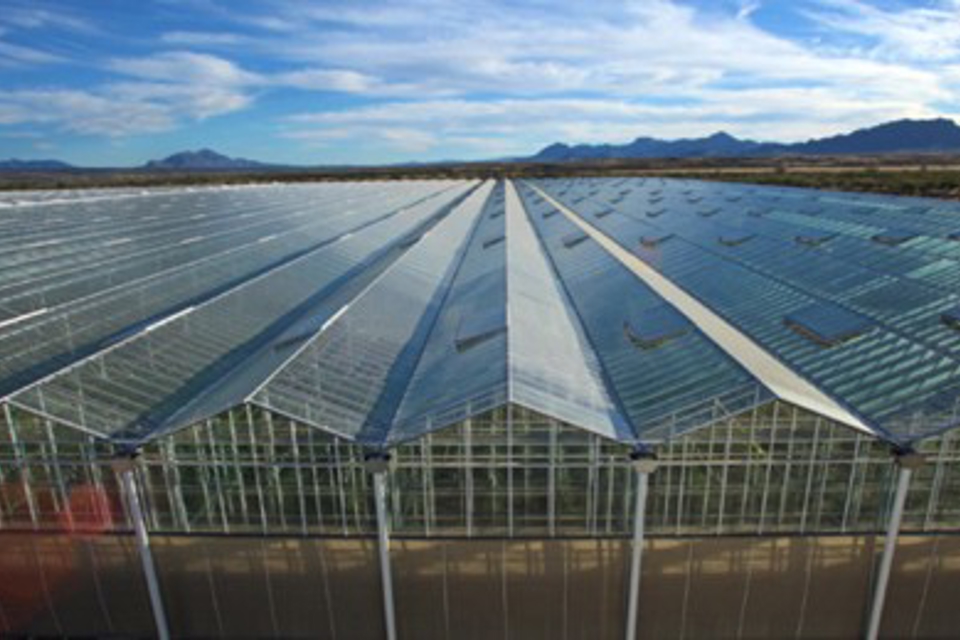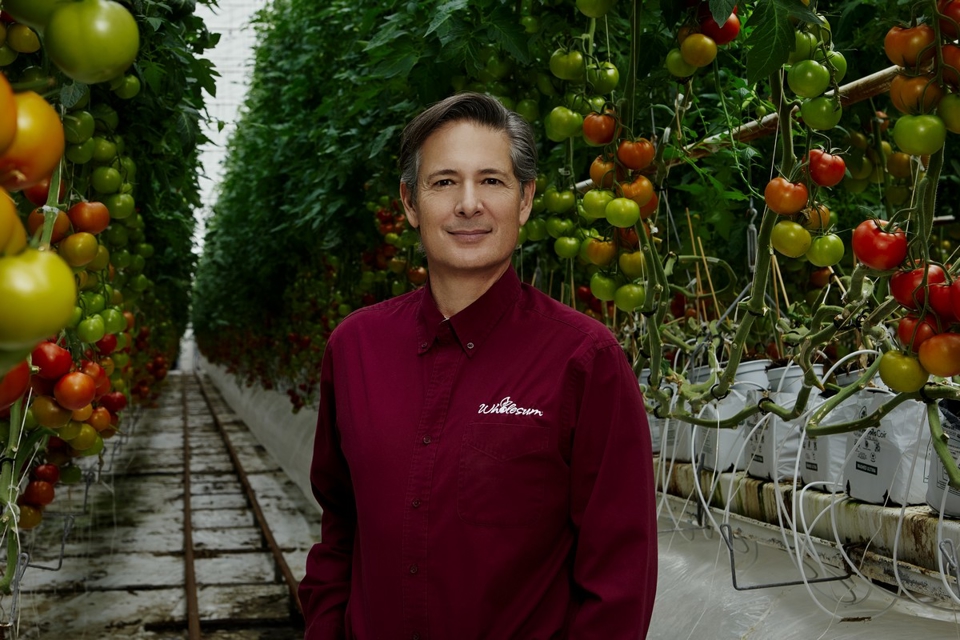KUBO Group consists of four companies that strengthen and support each other. At KUBO Group and its subsidiaries, we are synonymous with innovation and sustainability, constantly striving to advance the agricultural sector.
15 years of Ultra-Clima®: Wholesum creates homogeneous greenhouse climate in the heat of Arizona and Mexico
It is no coincidence that the second Ultra-Clima greenhouse also ends up with a grower who is not afraid to experiment. Fifteen years ago, the startling performance of the greenhouse at Houweling Nurseries caught the eye of Wholesum, an organic grower in America and Mexico. In the summer heat, year-round cultivation there was not an option in the past. Meanwhile, KUBO alreadybuilt Ultra-Clima greenhouses for the company in both Arizona (10.000 m²) and Mexico (14.000 m²). COO Theojary Crisantes: "Growing until 15 years ago was much more trial and error than it is now.
In 15 years, the climate has only become more challenging, Theojary notes. 'At the end of September, we had another day in Arizona with 37 degrees Celsius (98.6 degrees Fahrenheit). Late September! Growing conditions are extreme anyway. In winter, it can get below zero here just like that. And in summer it is forty degrees Celsius (104 degrees Fahrenheit) or more. In the past, we had to take a break in the summer because we couldn't grow year-round.'
Looking for a better greenhouse climate, Wholesum ends up with a "pad and fan" system. This improved growing conditions somewhat, but not nearly enough. Theojary: "We were able to control the climate a little better, but we still didn't get an even climate. As a result, one part of the greenhouse was warmer than the other. When we could start harvesting tomatoes, it could make a difference of a week.'
Gas supply by truck
An intermediate step is still the installation of fans in the greenhouse. At that time, fifteen years back, an American colleague is already well advanced in experimenting in a semi-closed greenhouse: Casey Houweling, together with KUBO the founder of the Ultra-Clima concept. 'Around that time we got into a conversation with KUBO. We were triggered by the first results of the Ultra-Clima greenhouse. The main advantage was the ability to create a homogeneous climate. But with the greenhouse we could also reduce energy consumption. At that time, we did not have an ideal gas supply. We didn't get gas through a pipeline, but it was brought in by truck. That was an expensive business.
'Would it really work?'
A first 2.500 m² greenhouse is coming up in Sonora Mexico. 'One of the biggest uncertainties was whether it would really work. Getting heat away from a greenhouse on hot days with high humidity is a big challenge. But the results that KUBO had already achieved at Houweling gave us confidence.' Soon the results also proved encouraging enough at Wholesum to expand the Ultra-Clima acreage by another 2.500 m².
Substantial learning curve
Growing in the new greenhouse does prove to be a completely different profession, Theojary observes. The Ultra-Clima greenhouse has a steep learning curve. And we are actually still learning every day. In those days you didn't really have the sources of information that we have now. Growing until fifteen years ago was much more trial and error than it is now, with Smart Growing from KUBO. You used to have to do a lot of research yourself, now KUBO itself has the knowledge of the technology and of cultivation.'

Meanwhile, the acreage of Ultra-Clima greenhouses at Wholesum has grown to 24.000 m² acres, spread across locations in the United States and Mexico. The next challenge is already in the greenhouse: after tomato cultivation, cucumber cultivation is next. 'That's a very different crop. We've only been on the road ten months and we can't say very much about it yet.'
Organic grower
The company has been certified for USDA Organic cultivation for thirty years. Wholesum also cultivates according to the principles of Fair Trade. The choice of the Ultra-Clima greenhouse therefore fits seamlessly into Wholesum's philosophy. Theojary: "It is a pressurized greenhouse, with one air inlet. That helps prevent insects from entering the greenhouse. Anything that can help prevent diseases and pests is a bonus.'
Innovation continues
With growing in the world's most advanced horticultural greenhouse, Wholesum is ready for what's to come in the future. Innovation continues at the family-owned company. Infrared cameras are used to detect temperature differences in the greenhouse in order to even better control the climate. The company is also investing in sustainable solutions. The use of solar panels should make the company three-quarters self-sufficient in its electricity needs. The installation of electricity meters in all parts of the greenhouse provides insight into the exact consumption of electricity.
They are measures that, for Theojary, fit into the continuous search for optimal operations. 'Whether we are there now? Not by a long shot. We have made a hundred adjustments to tailor the Ultra-Clima greenhouse even better to our needs. Every location is different. And we will continue to make adjustments in the future. That is why the partnership with KUBO is so important. KUBO is a partner who listens carefully to us. For years.


